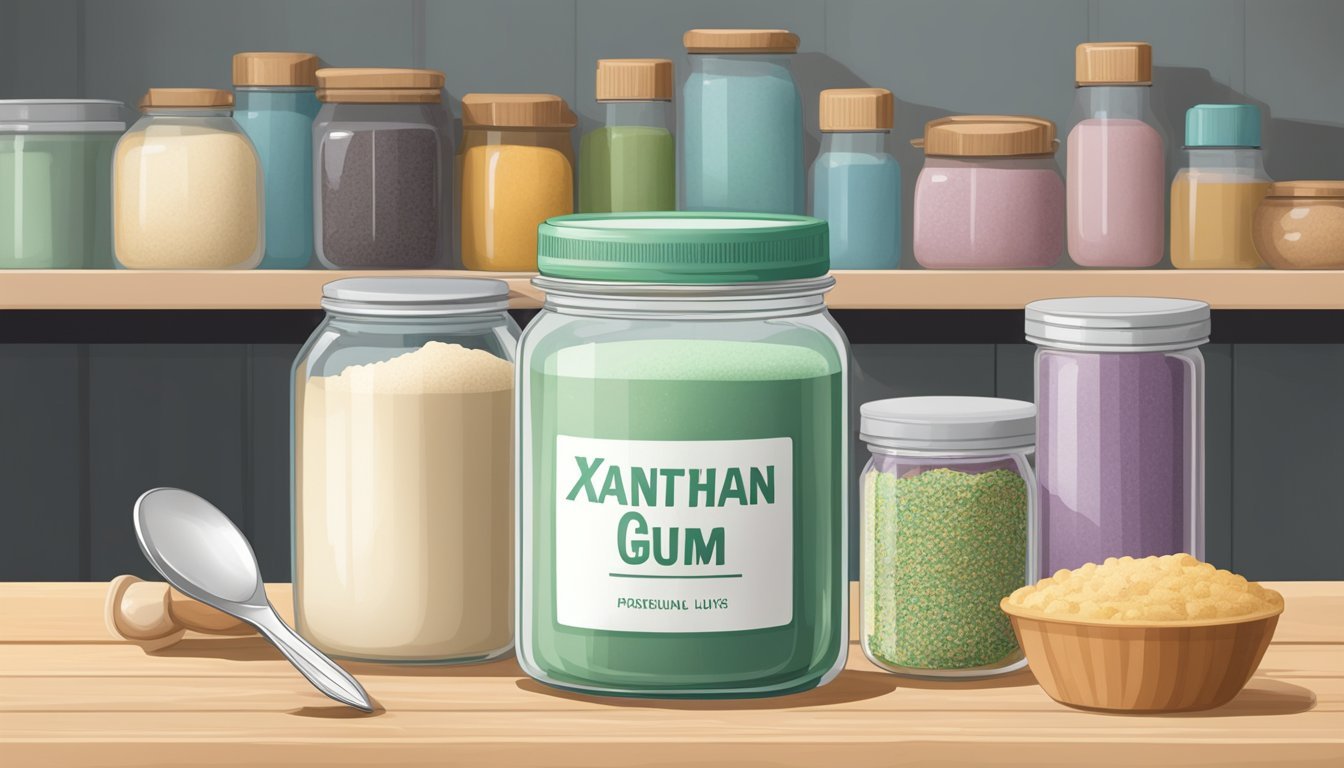How Long Does Xanthan Gum Last?
Understanding Its Shelf Life and Storage Tips
Xanthan gum is a versatile ingredient commonly used in food production to stabilize, emulsify, and thicken products. Derived from the fermentation of sugars by Xanthomonas campestris bacteria, it is particularly popular in gluten-free baking where it replaces the elasticity and stickiness that gluten provides. Xanthan gum's longevity is comparable to that of other powdered products, with an unopened package typically lasting up to two years when stored correctly.
Once opened, the storage method becomes pivotal in maintaining its quality. Transferring xanthan gum to an airtight container and storing it in a cool, dry place shields it from moisture and air, both of which can degrade its thickening properties over time. With proper handling, an opened package can remain useable for an additional six to twelve months.
Determining whether xanthan gum has gone bad is a straightforward process. Indicators of spoilage include an off odor, a change in appearance, or clumping due to moisture exposure. While xanthan gum does not spoil as quickly as many food products, these signs suggest that the product may no longer elicit the desired culinary results and should be discarded.
Understanding Xanthan Gum
Xanthan gum is a versatile ingredient in both food and non-food industries, known for its thickening, stabilizing, and emulsifying properties.
Definition and Production
Xanthan gum is a polysaccharide that results from the fermentation of glucose or sucrose by the bacteria Xanthomonas campestris. It is commercially produced in a controlled fermentation process, then precipitated and dried into a powder form for use in various applications.
Properties and Uses in Food
As a food additive, xanthan gum serves as an emulsifier, thickener, and stabilizer. It enhances the texture of gluten-free baking, binds ingredients in sauces and salad dressings, and prevents ice crystals in ice cream. In recipes, even a small amount of xanthan gum can significantly affect the desired consistency.
Health and Nutritional Aspects
While xanthan gum is used to improve the texture of food, it may also have health benefits. It can help to lower cholesterol and blood sugar levels. However, some people may experience digestive issues, and it is important to consider potential allergies. In small quantities, it generally has a neutral impact on gut bacteria and is safe for those with conditions like celiac disease.
Xanthan Gum in Non-Food Products
Beyond the kitchen, xanthan gum is utilized in the cosmetics and pharmaceutical industries. It acts as a stabilizer in cosmetics and can be found in industrial products like paint. In medical applications, it can be used as a saliva substitute to aid in swallowing for individuals with dysphagia.
Alternatives to Xanthan Gum
In cases where xanthan gum is unsuitable, alternatives include chia seeds, psyllium fiber, and cornstarch. These can provide a similar thickening effect in recipes and are often used in gluten-free flours as a binding agent. Each alternative comes with its specific properties and may affect the outcome of a recipe differently.
Practical Applications and Tips
In this section, detailed guidance on incorporating xanthan gum into various recipes and the best practices for its storage and handling is provided. Real-world applications ensure optimized usage and prolonged shelf life of xanthan gum.
Incorporating Xanthan Gum in Recipes
Xanthan gum is a versatile ingredient typically used in gluten-free baking to replicate the texture and consistency that gluten provides. Cooks can use it in baking breads, cakes, and cookies where it acts as a stabilizer and thickener. Its power to bind and thicken makes it ideal for dressings, sauces, soups, and stews, enhancing mouthfeel without altering flavor.
When mixing xanthan gum into a recipe, one should start with a small amount—usually 1/4 to 1/2 teaspoon per cup of flour for baked goods—and incrementally adjust to achieve the desired thickness. It's crucial to mix it thoroughly to prevent clumping. The final product will have the familiar, satisfying texture whether one is baking a cake or thickening ice cream.
Storage and Handling of Xanthan Gum
Xanthan gum's shelf life and effectiveness can be substantially extended with proper storage and handling. It should be kept in a cool, dry place away from direct light and humidity to maintain its stability. Storing it in an airtight container is essential to shield it from moisture, which can cause it to clump and degrade.
The pantry is an excellent storage location, and when stored correctly, xanthan gum can remain stable for several years. Even with an expiration date, it often lasts well beyond that time if the container is kept sealed and the contents are not exposed to contaminants. Keeping the storage area clean further ensures that the xanthan gum maintains its shelf life and quality over time.
Xanthan Gum Safety and Regulations
Xanthan Gum has undergone various safety evaluations and is subject to specific regulatory standards, particularly by the Food and Drug Administration (FDA). Despite its approval for use in food, concerns about potential side effects remain, necessitating awareness of both regulatory frameworks and health implications.
FDA Approval and Regulations
The FDA classifies xanthan gum as a food additive that is "generally recognized as safe" (GRAS) for use in foods. It falls under Title 21 Code of Federal Regulations part 172.695, where specific purity criteria are outlined. The regulation stipulates that xanthan gum must pass certain standards if it contains more than 1.5 percent of pyruvic acid to be deemed consumable. Such standards are critical as they ensure that only high-quality xanthan gum enters the food supply.
Regulated attributes include:
Gluten-free status, beneficial for those with celiac disease or gluten intolerance
Limitations on microbiological contaminants
Potential Side Effects and Risks
While xanthan gum is considered safe for the general population, it can present side effects and risks in certain cases. As a soluble fiber, it can cause digestive issues like gas and bloating, especially when consumed in large amounts. In people with severe wheat, corn, soy, or dairy allergies, it can provoke allergic reactions due to the substrates used in its production.
Possible health concerns include:
Cholesterol and Blood Sugar: Can be beneficial by stabilizing these levels, but the effects vary between individuals.
Dysphagia: Its thickening properties can help those with swallowing difficulties, reducing the risk of aspiration.
Gut Bacteria: It is known to act as a prebiotic, thus potentially aiding in the health of gut bacteria.
Diarrhea: Overconsumption may lead to a laxative effect resulting in diarrhea.
It is crucial that consumers and manufacturers observe these regulations and potential health implications to safely incorporate xanthan gum into their diets or products.





